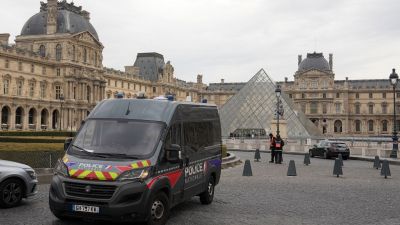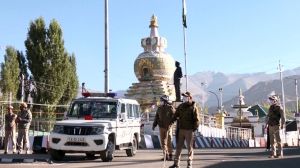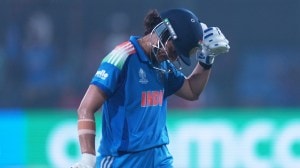Army told to wait for Made-in-India night vision devices, Pakistan has the latest from US
By the looks of it, the Army has an impressive Infantry, the second largest in the world, backed by a solid armoured thrust of over 3,000 tanks...

By the looks of it, the Army has an impressive Infantry, the second largest in the world, backed by a solid armoured thrust of over 3,000 tanks that can overwhelm the western front. But as soon as the sun goes down, the Army gets affected by a deadly case of night blindness.
For all practical purposes, the Army is fighting blind at night. Its soldiers face a glaring shortage of night vision devices, the ones in service are a generation behind what Pakistan already has and only 10 per cent of its tanks have a proven night-fighting capability.
In a modern scenario where most battles are fought under the cover of darkness, the inability to even see the enemy is crippling the war capabilities of the Army. While the top leadership is acutely aware of the shortcoming, efforts to procure new night vision devices for soldiers has been stuck in a tussle between the Army and the Defence PSU Bharat Electronics Limited (BEL).
At the crux of the matter is the Army requirement of new “third generation” night vision devices for soldiers and night sights for rifles. The Army currently has second generation devices which are termed more of a hindrance than an asset. The difference is in the capability to see at night. Pakistan, on the other hand, has got a range of third generation devices from the US under the War on Terror pact.
The Army is keen to speedily buy new generation devices but BEL, which has invested in second generation sights and even set up a factory, has told the Ministry of Defence that all procurements should be made through the PSU.
While BEL has asked the Army to wait till it finds a foreign partner to manufacture third generation devices “indigenously”, it is nowhere near a possible tie-up. The problem is that foreign companies are not keen on sharing technology with a PSU and would rather tie up with private players for “hassle free” production.
As this tussle continues between the Army and BEL, stuck in the middle is the Infantry that is made aware every night that it is not fighting fit to take on the enemy. The night sights on its light machine guns, for example, are so power ineffective that their batteries drain out within two hours. Persistent efforts to get new improved batteries from BEL have hit a roadblock.
The Army is now looking at ways to skirt the PSU wrangle. A new tender to replace WW II-era sten machine guns with 4.5 lakh carbines, for example, has a requirement of night vision integrated in the contract. This contract too got stuck for several years in the PSU wrangle after both DRDO and the Ordnance Factory Board (OFB) made efforts to push forward their “indigenous” products to the armed forces. While both were turned down, a global tender was issued this year to meet the requirement. But it will take at least five years before the Army gets to see the new carbines.
Adding to the shortage is the fact that the Defence Ministry has not revised the inventory holding of Infantry for several decades. Each section, comprising 10 soldiers, is currently authorized only one night vision device. While the ideal holding will be 10, the Army is currently pressing for at least 50 per cent of its soldiers to be equipped with night vision devices.
The Armoured Corps too, is facing an acute problem in the same area. Except for the 310 T-90 tanks it procured from Russia, all other tanks do not have any proven night fighting device. This constitutes just 10 per cent of the Army’s holding of tanks. The T-72 tanks that form the bulk of the Armoured Corps are being fitted with night fighting capabilities but the results so far have not been satisfactory.
Efforts are on to modernize some 1,200 T-72 tanks that will remain in service with the new Thermal Imaging Fire Control Systems, Night Fighting systems and Laser Warning systems to enhance their service life. But like many tenders, the first effort to refurbish the tanks in 2004 ended in disappointment. A fresh tender is now being issued to modernize the tanks but will take at least four years to fructify.
While the Infantry doesn’t have the classical problems of “boots on the ground”, it is desperately short on officers to lead them, still fights blind at night and doesn’t even have enough bullet-proof jackets for soldiers fighting insurgency.
With a shortage of over 11,000 officers, the biggest concern of the Infantry, experts say, is to find leaders to take troops to battle. While the demographic pattern of officers in the Army has undergone a massive change in the past decade, the sheer shortage of officers has had a crippling effect at operational levels.
“Today, my biggest worry is the manpower situation and morale of the armed forces. The Infantry has less than two-third of the authorized level of officers. That is a big gap,” says former Army Chief General VP Malik.
Unlike western forces, the Army has always been heavily dependent on officers to lead soldiers in war. The current strength of officers is just 76 per cent of the authorized levels. The force structure calls for young officers leading from the front but ironically, most shortages are at these very ranks.
This, coupled with the fact that the Army is becoming top heavy is eroding its fighting capabilities. “Today, I find that headquarters (at different levels) have become top heavy. Many officers have landed up at headquarters but the combat power has got eroded. At battalions, the people who fight, there are about 10-12 officers against the authorized strength of 22,” says Gen Malik.
Another glaring deficiency is in protective bullet proof jackets for soldiers. While countries like the US are making moves to make the life saving accessory standard issue for all soldiers, the Army is hard pressed to even equip all soldiers in counter-insurgency operations with the jackets. With low weight jackets in low supply, soldiers on high risk missions like night patrolling or road opening parties are issued BPJs from a common pool as per need.
An ambitious “soldier as a system” plan (F INSAS) to provide troops a GPS-based navigation system, light-weight communication equipment, new BPJs, light weight guns and a helmet with a built-in head-up display by DRDO is still years away from getting approved.
The estimated Rs 7,000 crore project, which has been hanging in limbo for the past five year, was supposed to go in for trials by 2012 but the current pace of work, experts say, will make it difficult to start testing the system for at least a decade.
While things are marginally better for the Armoured Corps, the decisive edge is still missing and the thrusting arm of the forces is battling with its own set of problems. The Army is extremely happy with its new T-90 Main Battle Tanks that were inducted after the Kargil conflict but the pace of indigenous manufacturing of the machine is a problem area.
While 310 tanks have been inducted already, the trouble began when fully indigenous production was started by the OFB. As of February this year, only 5 tanks had been fully manufactured in the country mainly due to delays in transfer of technology by Russia. tion.
“Our deterrence is less effective. When people are watching our state of affairs, they are less deterred and try to take liberties. The prevention level (of the armed forces) is weak,” says Gen Malik.
Tomorrow: The Navy’s problems





- 01
- 02
- 03
- 04
- 05


























